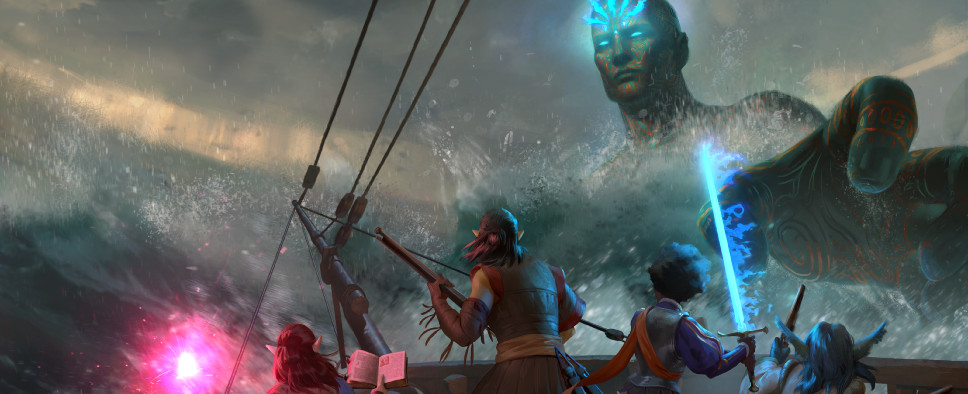Pillars of Eternity II: Deadfire Preview
-
Category: News ArchiveHits: 2050

With Obsidian's Pillars of Eternity II: Deadfire less than a month away, PC Gamer offers a comprehensive preview that does a good job of introducing the game, it's setting, systems, and characters. So, if you'd like to know what's the deal with the Deadfire archipelago, how the game will handle its ship combat, or who will be joining you on your seafaring journey, you should check it out. An excerpt:
Set sail
When you undock, you find yourself on the world map. It’s here where you control your ship, clicking on spots of ocean to move around. And when you see an anchor symbol on the coast of a landmass, that means you can stop there. It might be a lifeless desert island hiding a quest or dungeon, or a village like Tikawara. This idyllic settlement is home to the Huana, an aumaua tribe whose ancient way of life is being threatened by the arrival of explorers from the Vailian Trading Company; an analogue of the real-world East India Company. It’s here where you encounter one of the many moral quandaries Deadfire throws at you.
Disembarking from my ship, I meet a concerned-looking man called Vektor on a wooden dock. Noticing that I’m a fellow mountain dwarf, he seems relieved. “How long I waited for a familiar face in this friendless hovel!” he exclaims, eager to share his predicament. He tells me he sailed to Tikawara with the Vailian Trading Company on a search for luminous adra, a semi-precious stone that grows from the ground in Pillars’ world. But the crew disappeared while investigating a nearby island to the east, Poko Kohara; an island Ruãnu, the village chieftain, tells me is beset by strange, otherworldly storms that are driving visitors away.
The village is an example of Deadfire’s distinctive atmosphere and art direction. Around me I see immense wooden carvings of seabirds and angler fish: a reflection of the Huana’s close connection to the sea. Their huts are carved with intricate patterns and painted in bright colours, reminiscent of ancient Polynesian art. It feels like I’m a million miles away from the Dyrwood, which makes the setting seem more exotic and alien. I also get a brief glimpse of the new dynamic weather effects when a heavy rainstorm sweeps in, soaking the village—weather that will undoubtedly make your life at sea even more of a trial.
Ruãnu welcomes explorers like the Vailians to Tikawara, because he thinks trading with them will bring prosperity to his people. But Nairi, the priestess, thinks they threaten their way of life, and will end up exploiting or enslaving the Huana. And so it falls upon you to make a choice. Do you clear the storms, making Tikawara an appealing port for explorers again? Or do you side with Nairi and destroy the adra so they have no reason to visit this part of the archipelago? You can wade in and make a decision, changing the lives of these desperate islanders forever. Or you can just sail away and leave them to their troubles.
It’s a moral predicament that’ll be familiar to anyone who played the first Pillars of Eternity, or any of the BioWare/Black Isle games it shares its DNA with. The Watcher has a nasty habit of getting tangled up in people’s lives, and it seems things are no different in the Deadfire Archipelago. This place is as troubled as the Dyrwood, and it’s interesting to see Obsidian exploring themes of colonisation and self-determination. It’s clear the setting draws from real history, particularly colonialism in the South Pacific in the 19th century, and I’m curious to see the resulting storytelling with that subject matter. Will a Watcher navigate choices around exploiting indigenous peoples like the Huana for their own gain?

